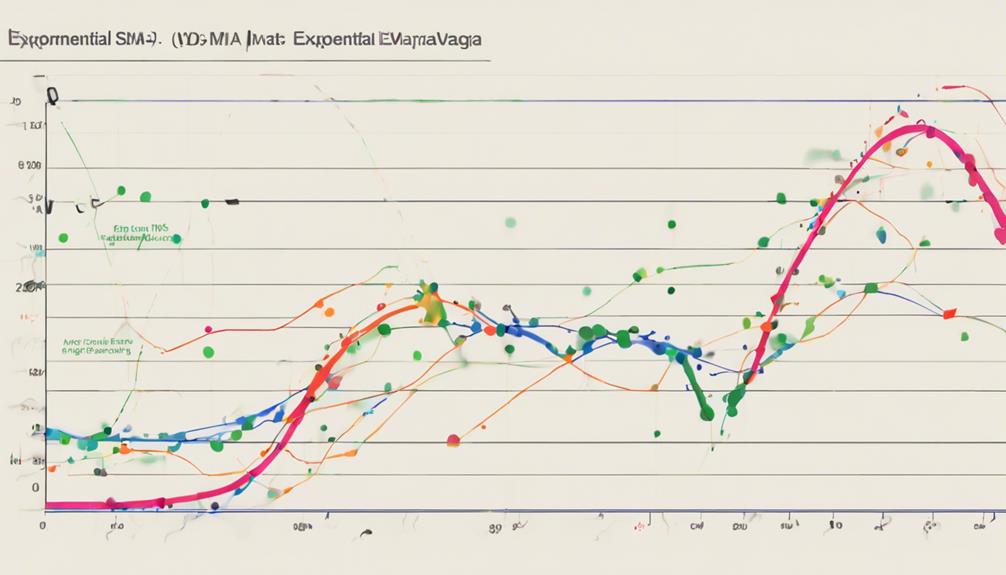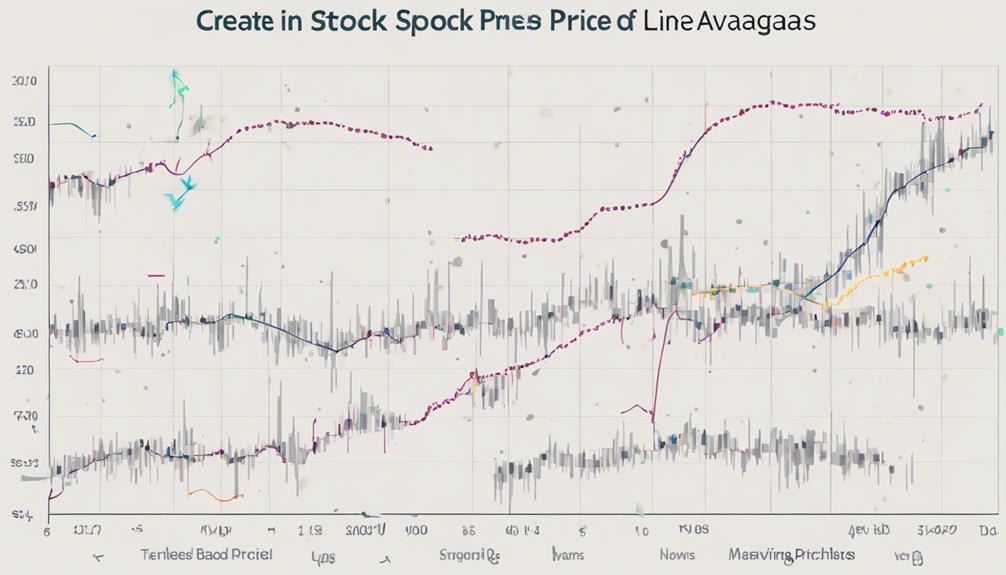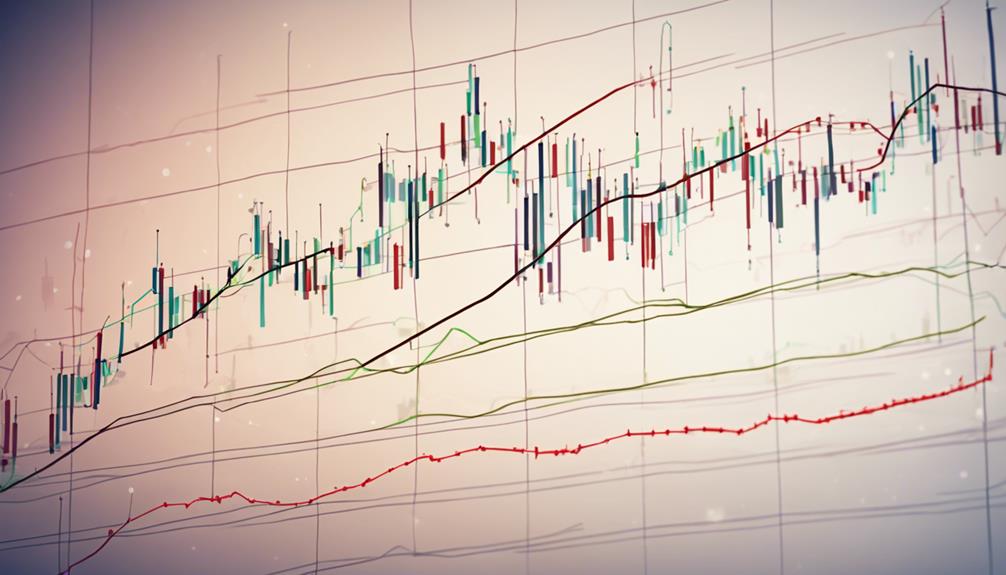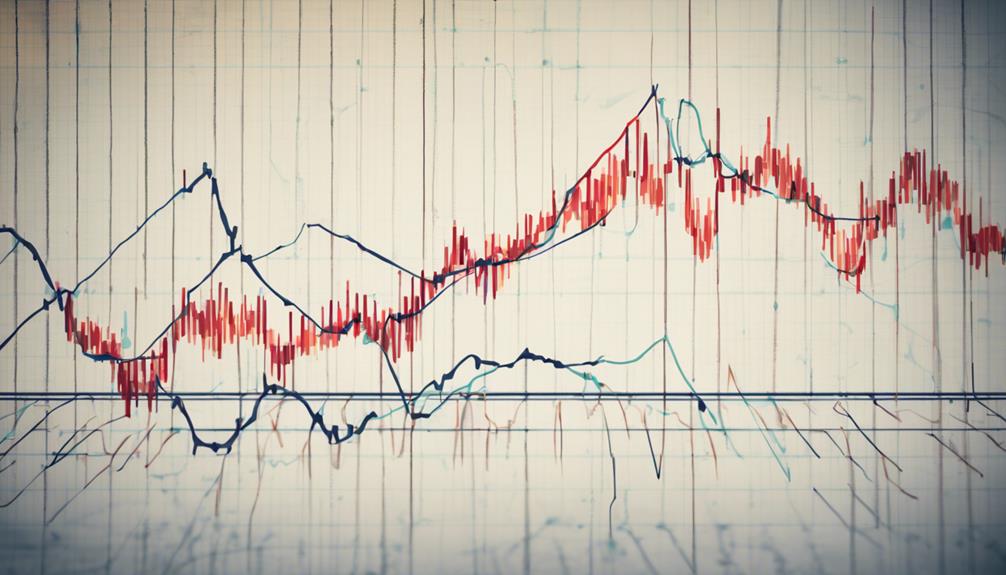As you navigate the world of stock trading, mastering the art of moving averages could be the key to unlocking your potential for success. By understanding how moving averages can influence your trading decisions, you are taking a crucial step towards a more informed and strategic approach.
But how exactly can these averages help you excel in the volatile landscape of the stock market? Let's explore the nuances and intricacies together.
Importance of Moving Averages
Moving averages serve as indispensable tools for traders seeking to navigate the complexities of stock market trends and make informed decisions based on smoothed-out price data.
Simple Moving Averages (SMA) and Exponential Moving Averages (EMA) are commonly used to identify trend direction, potential entry points, and exit decisions. By smoothing out price fluctuations, moving averages help reduce noise in the data, making it easier to spot underlying price trends.
They signal a potential change in trend direction, providing traders with valuable insights for making buy or sell decisions. Understanding the importance of moving averages is crucial for successful stock trading, as they play a vital role in enhancing decision-making processes and risk management strategies in the dynamic stock market environment.
Different Types of Moving Averages

Simple Moving Averages (SMA) calculate the average price over a specific period by summing up closing prices and dividing by the number of periods, providing a foundational tool for trend analysis in stock trading.
When considering the different types of moving averages, here are key points to keep in mind:
- Exponential Moving Average (EMA): Offers quicker responses to price changes by giving more weight to recent prices.
- Weighted Moving Average (WMA): Assigns varying weights to prices, with higher weights on recent prices for faster trend identification.
- Choosing the Right Moving Average: Select between SMA, EMA, or WMA based on your trading goals, timeframe preferences, and the level of sensitivity you require for price movements. Each type has its strengths for long-term trend analysis or short-term trend assessment.
Optimal Moving Average Length

To determine the optimal length for a moving average in stock trading, consider your individual time horizon and preferred trading style. Shorter moving averages like the 10-day SMA react quickly to price changes, suitable for active traders but may generate false signals.
On the other hand, longer moving averages such as the 200-day SMA offer a broader view of trends, better for long-term investors but can be slow to respond to short-term fluctuations. Finding the right moving average length involves balancing the need for responsiveness to price movements with the requirement for trend confirmation.
Traders often test different moving average lengths to align with their trading strategy and risk tolerance, aiming to enhance decision-making and overall performance.
Leveraging Crossovers in Trading

When leveraging crossovers in trading, keen attention to the interaction between short-term and long-term moving averages is crucial for identifying potential market trends. Utilizing crossovers effectively can provide valuable insights into trend changes and offer entry points for traders.
- Golden Cross: This signifies a bullish signal, indicating a potential uptrend when a short-term moving average crosses above a long-term moving average.
- Death Cross: This acts as a bearish signal, suggesting a potential downtrend when a short-term moving average crosses below a long-term moving average.
- Enhanced Strategies: Combining crossovers with other technical indicators can refine trading strategies, improving decision-making processes and overall trading performance.
How Can Day Trading Moving Averages Improve Stock Trading Performance?
Day trading moving averages offer valuable insights into stock trading performance. By analyzing short-term trends, traders can make more informed decisions. Utilizing insights day trading averages can lead to improved timing and increased profits. This strategy provides a clear picture of market momentum and helps traders navigate volatile conditions.
Managing Moving Average Disadvantages

Navigating through the drawbacks of relying solely on moving averages for trading insights requires a nuanced understanding of their limitations and potential pitfalls in market analysis. Moving averages, being based on historical data, can lead to false signals, especially during choppy price action when the market may not respect moving average support or resistance levels.
In non-trending conditions, moving averages may provide unreliable signals due to the lack of clear price trends. However, they excel in trending markets by accurately identifying price trends. To mitigate issues like false signals or choppy price action, adjusting the time frame of moving averages can be a temporary solution.
It's essential to recognize these limitations when utilizing moving averages for informed trading decisions.
What Are the Key Similarities and Differences Between Stock Trading and Day Trading Moving Averages?
Stock trading and day trading moving averages have key similarities and differences. Both use moving averages to analyze stock price trends. However, day trading focuses on short-term movements, while stock trading takes a longer-term approach. Understanding these differences can provide valuable day trading moving averages insight for successful trading strategies.
Frequently Asked Questions
What Is the Most Effective Moving Average in Stocks?
In stocks, the most effective moving average depends on your trading style. For short-term trading, the Exponential Moving Average (EMA) is favored for its responsiveness. Long-term investors often rely on the Simple Moving Average (SMA) like the 200-day SMA.
What Is the 5 8 13 21 EMA Strategy?
Dive into the 5 8 13 21 EMA strategy – a quartet of moving averages orchestrating a market symphony. Each EMA, a maestro of its own, conducts time frames to unveil short-term trends and trade signals.
What Are the 4 Moving Average Strategies?
When trading, you can utilize moving average strategies like crossovers, bounces, trend-following, and breakouts. These methods involve interpreting price movements relative to moving averages to make informed trading decisions and capitalize on potential trend changes.
What Is the 9 21 55 EMA Strategy?
When trading with the 9 21 55 EMA strategy, you'll notice how the quick 9 EMA reacts like a sprinter, the 21 EMA smooths like a steady jog, and the 55 EMA provides the long-distance view, guiding your market moves effectively.
Conclusion
In conclusion, mastering the art of utilizing moving averages in stock trading is like having a powerful ally by your side in the volatile world of investments.
By understanding the importance of different types of moving averages, optimal lengths, and leveraging crossovers effectively, you can navigate the market with confidence and precision.
Embrace the power of moving averages, and watch your trading strategies soar to new heights with the guidance of this effective guide.
